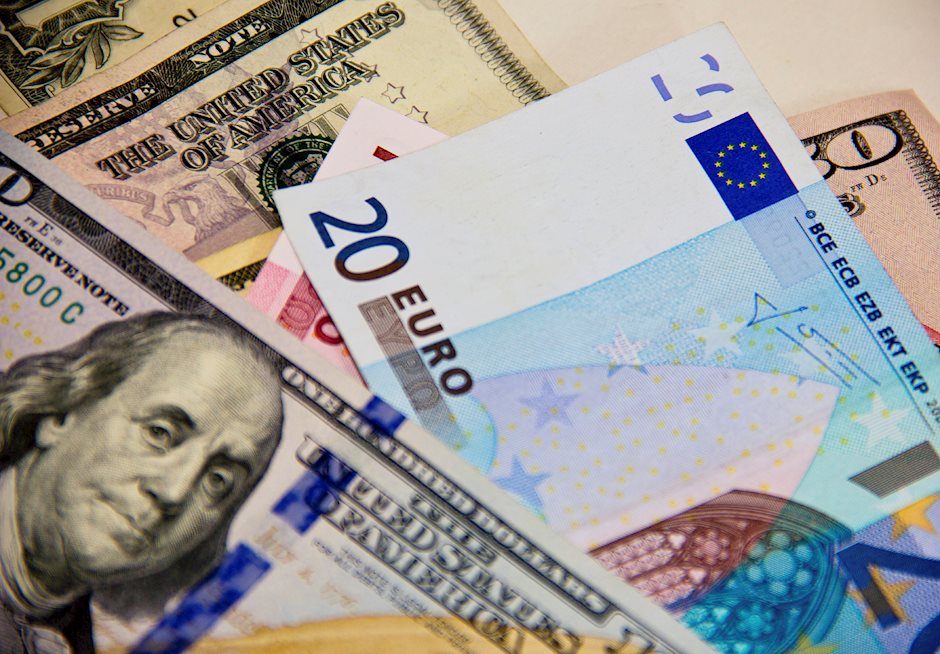EUR/USD rises to near 1.1200 due to dovish Fed’s Powell
- EUR/USD gains ground due to rising expectations of a Fed rate cut in September.
- Fed Chair Powell stated at the Jackson Hole Symposium, "The time has come for policy to adjust.”
- ECB official Olli Rehn stated that the recent slowdown in inflation bolsters the case for a rate cut next month.

EUR/USD extends its gains for the second session, trading around 1.1190 during the Asian session on Monday. This upside of the EUR/USD pair is attributed to the lower US Dollar (USD) following the dovish speech from the US Federal Reserve (Fed) Chairman Jerome Powell at the Jackson Hole Symposium on Friday.
Fed Chair Jerome Powell stated, "The time has come for policy to adjust." Although Powell did not specify when rate cuts would begin or their potential size, markets anticipate the US central bank will announce a 25-basis points rate cut at the September meeting.
Additionally, Philadelphia Fed President Patrick Harker emphasized on Friday the need for the US central bank to lower interest rates gradually. Meanwhile, Chicago Fed President Austan Goolsbee noted that monetary policy is currently at its most restrictive, with the Fed now focusing on achieving its employment mandate.
On the EUR side, European Central Bank (ECB) Governing Council member Olli Rehn said on Friday that the slowdown in inflation alongside weakness in the Eurozone economy strengthened arguments to lower borrowing costs next month, per Bloomberg. The growth outlook in Europe, especially manufacturing, is rather subdued, which enforces the case for a rate cut in September.
Additionally, Rabobank’s Senior FX Strategist, Jane Foley, remarked on Friday that the EUR/USD pair is expected to trade at 1.1200 on a three-month horizon. Foley noted that the recent breakout and the beginning of a new policy cycle for the Fed indicate that a new trading range is emerging. However, Foley also mentioned that if key US data released in early September comes in stronger than market forecasts, there could be potential pullbacks to around 1.1000 for the pair.
Euro FAQs
The Euro is the currency for the 20 European Union countries that belong to the Eurozone. It is the second most heavily traded currency in the world behind the US Dollar. In 2022, it accounted for 31% of all foreign exchange transactions, with an average daily turnover of over $2.2 trillion a day. EUR/USD is the most heavily traded currency pair in the world, accounting for an estimated 30% off all transactions, followed by EUR/JPY (4%), EUR/GBP (3%) and EUR/AUD (2%).
The European Central Bank (ECB) in Frankfurt, Germany, is the reserve bank for the Eurozone. The ECB sets interest rates and manages monetary policy. The ECB’s primary mandate is to maintain price stability, which means either controlling inflation or stimulating growth. Its primary tool is the raising or lowering of interest rates. Relatively high interest rates – or the expectation of higher rates – will usually benefit the Euro and vice versa. The ECB Governing Council makes monetary policy decisions at meetings held eight times a year. Decisions are made by heads of the Eurozone national banks and six permanent members, including the President of the ECB, Christine Lagarde.
Eurozone inflation data, measured by the Harmonized Index of Consumer Prices (HICP), is an important econometric for the Euro. If inflation rises more than expected, especially if above the ECB’s 2% target, it obliges the ECB to raise interest rates to bring it back under control. Relatively high interest rates compared to its counterparts will usually benefit the Euro, as it makes the region more attractive as a place for global investors to park their money.
Data releases gauge the health of the economy and can impact on the Euro. Indicators such as GDP, Manufacturing and Services PMIs, employment, and consumer sentiment surveys can all influence the direction of the single currency. A strong economy is good for the Euro. Not only does it attract more foreign investment but it may encourage the ECB to put up interest rates, which will directly strengthen the Euro. Otherwise, if economic data is weak, the Euro is likely to fall. Economic data for the four largest economies in the euro area (Germany, France, Italy and Spain) are especially significant, as they account for 75% of the Eurozone’s economy.
Another significant data release for the Euro is the Trade Balance. This indicator measures the difference between what a country earns from its exports and what it spends on imports over a given period. If a country produces highly sought after exports then its currency will gain in value purely from the extra demand created from foreign buyers seeking to purchase these goods. Therefore, a positive net Trade Balance strengthens a currency and vice versa for a negative balance.
Author

Akhtar Faruqui
FXStreet
Akhtar Faruqui is a Forex Analyst based in New Delhi, India. With a keen eye for market trends and a passion for dissecting complex financial dynamics, he is dedicated to delivering accurate and insightful Forex news and analysis.

















